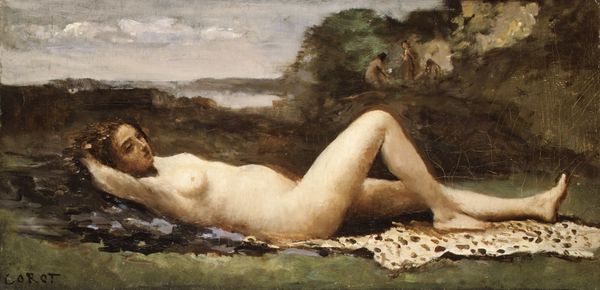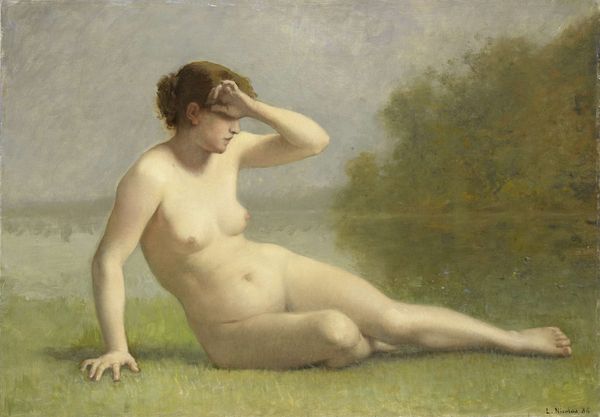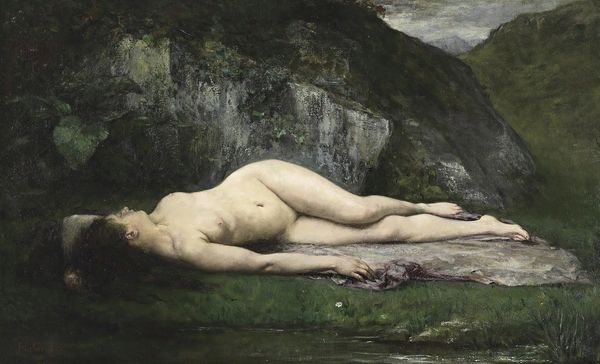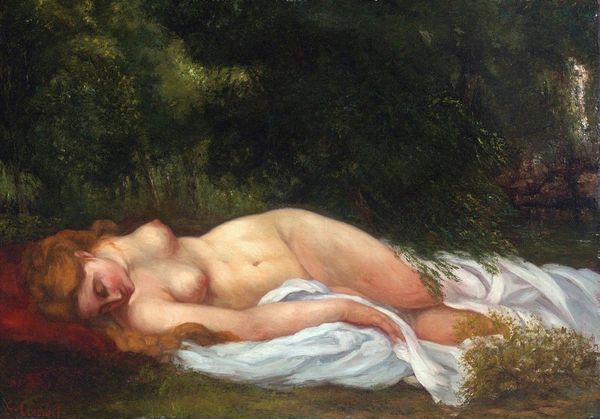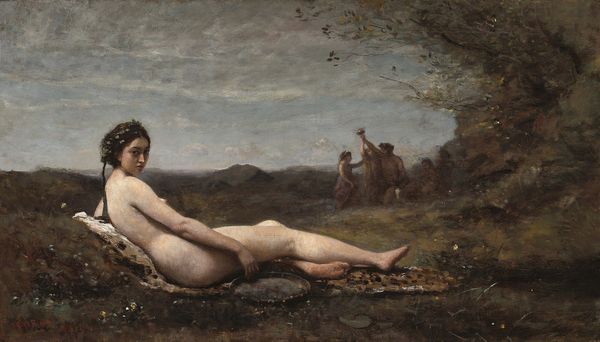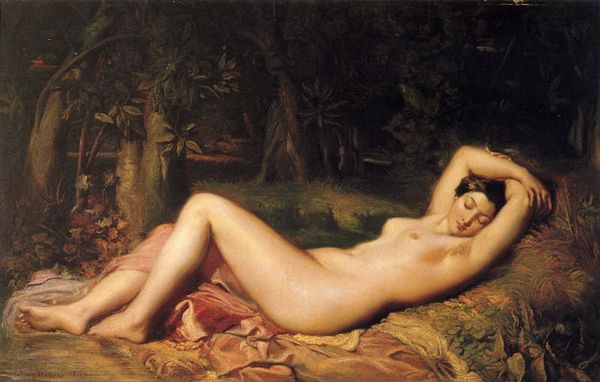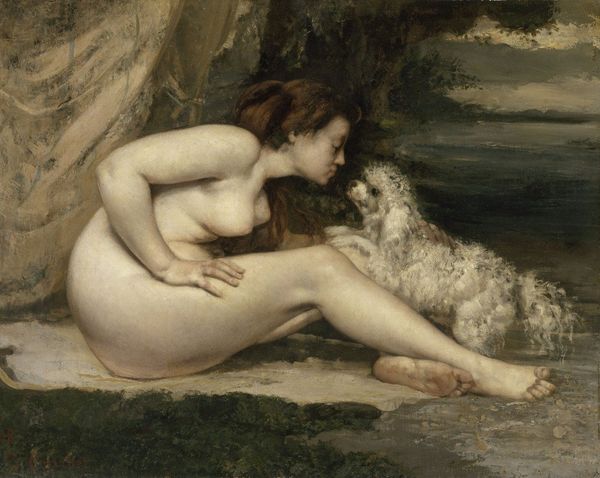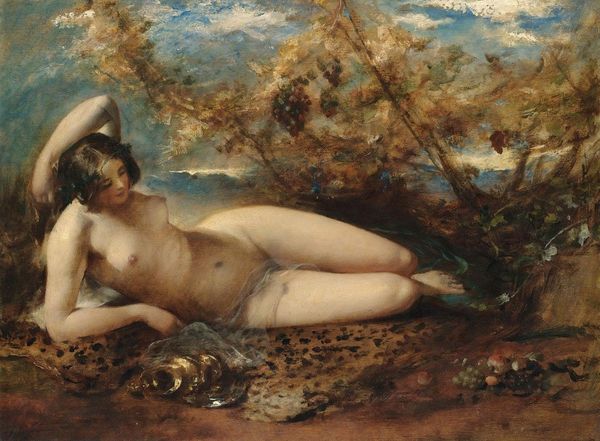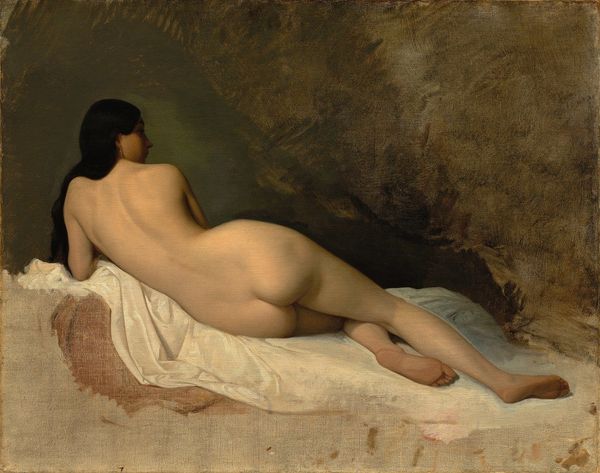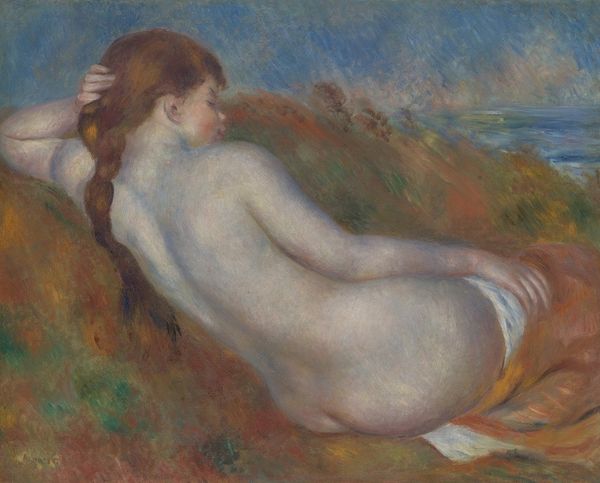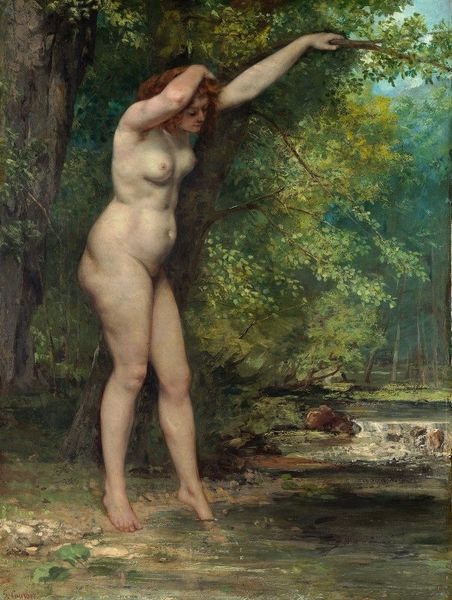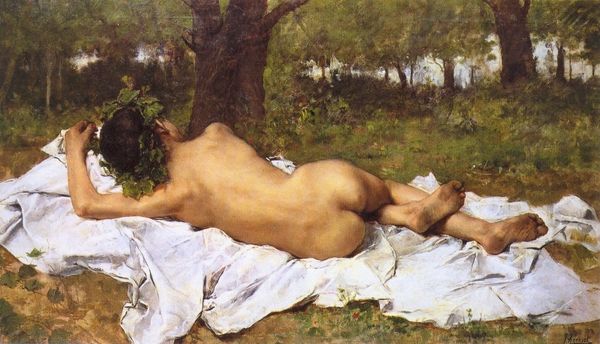
Copyright: Public Domain: Artvee
Camille Corot painted "Bacchante by the Sea" in 1865. The eye is immediately drawn to the reclining nude figure, her skin luminous against the muted tones of the landscape. The composition is structured by a contrast between the soft, organic forms of the figure and the more rugged, atmospheric elements of nature. Corot's treatment of light and shadow is especially noteworthy. The interplay between light and shadow across the Bacchante's body suggests a dynamic tension, not just between form and space, but between the tangible and the ethereal. The brushstrokes are loose and suggestive, blurring the boundaries between the figure and her surroundings, embedding the canvas in a kind of visual poetics. Ultimately, the painting invites us to consider the fluid relationship between the human figure and the natural world, capturing a transient moment of beauty and contemplation. The artist challenges us to look beyond simple representation and towards a deeper understanding of the subtle interplay between form, light, and the evocative power of art.
